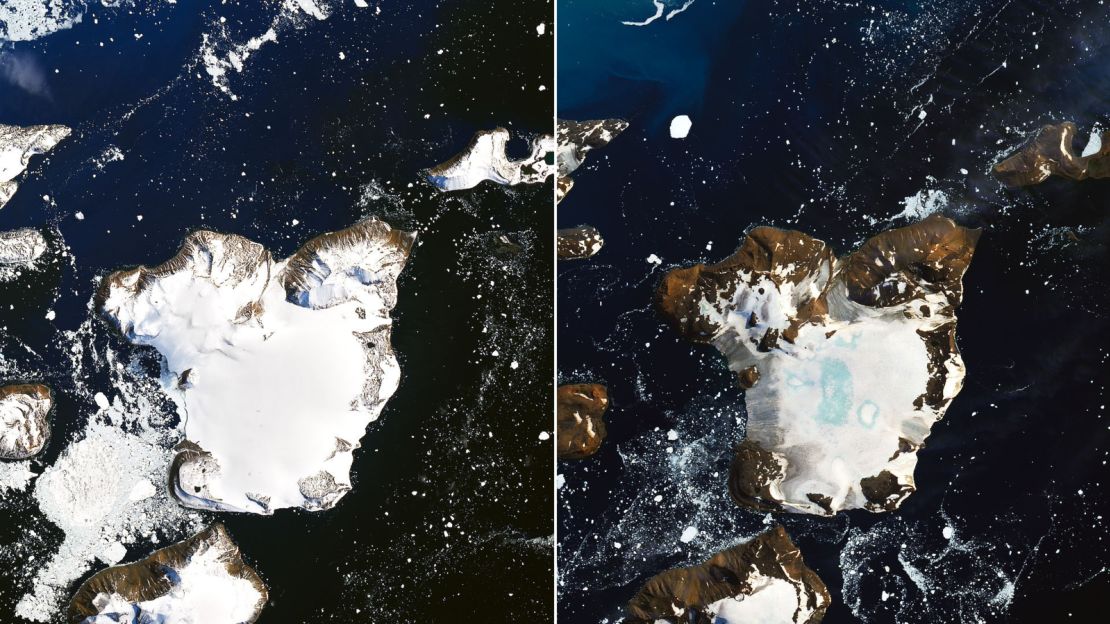A nine-day heat wave scorched Antarctica’s northern tip earlier this month. New NASA images reveal that nearly a quarter of an Antarctic island’s snow cover melted in that time – an increasingly common symptom of the climate crisis.

The images show Eagle Island on the northeastern peninsula of the icy continent at the start and end of this month’s Antarctic heat wave. By the end of the nine-day heat event, much of the land beneath the island’s ice cap was exposed, and pools of meltwater opened up on its surface.
Antarctica experienced its hottest day on record earlier this month, peaking at 64.9 degrees Fahrenheit. Los Angeles measured the same temperature that day, NASA said.
In just over a week, 4 inches of Eagle Island’s snowpack melted – that’s about 20% of the island’s total seasonal snow accumulation, NASA’s Earth Observatory said.
“I haven’t seen melt ponds develop this quickly in Antarctica,” Mauri Pelto, a geologist at Nichols College in Massachusetts, told NASA’s Earth Observatory. “You see these kinds of melt events in Alaska and Greenland, but not usually in Antarctica.”
Climate scientist Xavier Fettweis plotted the amount of meltwater that reached the ocean from the Antarctic peninsula. The heat wave was the highest contributor to sea level rise this summer, he said.
A perfect storm of conditions for a heat wave
As Pelot noted, melt events like this are quite rare for Antarctica, even during the summer. It’s one of the coldest places on Earth.
This heat wave was the result of sustained high temperatures, he said, which almost never occurred on the continent until the 21st century. It’s the kind of weather event that grows increasingly common as global temperatures rise.
This month, high pressure over Cape Horn in Chile’s archipelago allowed warm temperatures to build up and travel. Antarctica’s northernmost peninsula is typically protected from these high temperatures due to strong winds that cross the Southern Hemisphere, but those winds were unusually weak and couldn’t stop the high temperatures from penetrating the continent’s northern tip, NASA reported.
Ice caps in Antarctica are already melting rapidly due to heat-trapping gas pollution from humans. Rising sea levels could be catastrophic for the millions of people who live along the world’s coasts: Antarctica’s ice sheets contain enough water to raise global sea levels by nearly 200 feet, according to the World Meteorological Organization.
And earlier this month, a massive iceberg along the western edge of Antarctica broke off from the Pine Island Glacier. The 116 square mile-chunk of ice likely fractured as a result of warmer sea temperatures, and it’s evidence that the glacier is quickly responding to climate change, the European Space Agency said.
CNN’s Drew Kann and Brandon Miller contributed to this report.




















